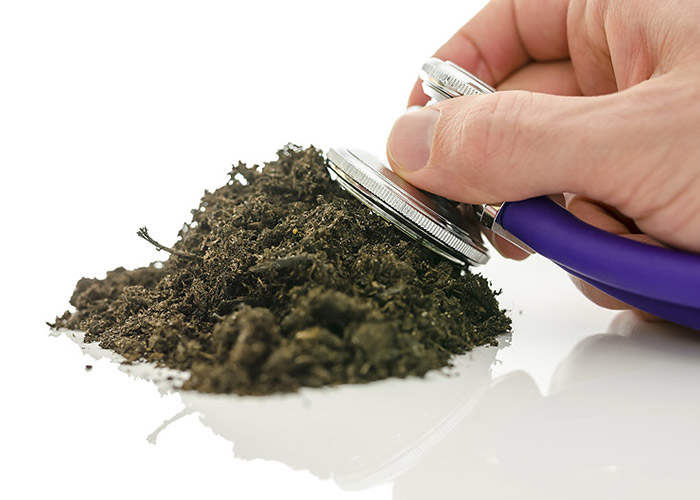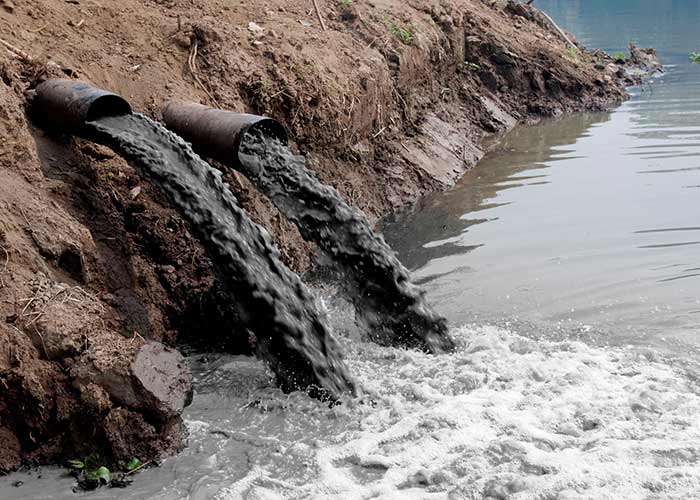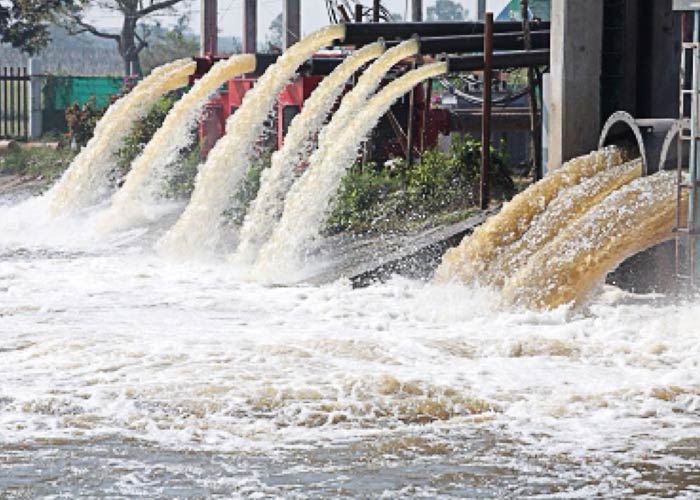Soil is the basic unit of environment. Large-scale industrialization and urbanization, the growing population in the cities and the emerging fluid and concrete residues are polluting the soil. Due to solid waste, soil pollution is spreading further. Solid waste often comes from houses, cattle sheds, industries, agriculture and other places. Its stacks take the form of dunes, which contain items such as ash, glass, fruits and vegetables, papers, clothes, plastic, rubber, leather, eggs, sand, metal, cattle waste, dung etc. When the hazardous chemicals, sulphur, compounds of the lead released in the air reach the soil, it becomes polluted.
How to prevent Soil Pollution (Soil Conservation)
Soil is an invaluable natural resource, on which the whole world is dependent. In an agricultural country like India where there is serious problem of soil erosion, soil conservation is an essential and urgent task. Soil conservation is a process under which efforts are made not only to maintain the quality of soil, but also to prevent soil pollution.
Pollution leads to the loss of soil fertility as a result of loss of topsoil and nutrients, loss of organic matter and clay and the consequent loss of the soil’s capacity to retain nutrients and water. There are two methods of soil conservation – a) Biological method b) Mechanical method.
(A) Biological method –
(i) Crop related (ii) Forestry related.
(i) Crop related:
- Crop rotation – It implies frequent succession of crop on the same portion of land in a given time-frame. Crop mixes such as wheat+mustard, Arhar+ Groundnut, maize+ cowpea etc., can be grown. Thus, after a harvest of one crop there is another growing up or covering the soil so that the soil is never bare or exposed.
- Planting along the contours – Leguminous plants, cowpea and cereal crops can be grown in a particular way to check soil erosion. This helps farmers get maximum profit with least investment and increases the fertility of the soil.
- Strip cropping – This reduces the velocity of water flow and prevents erosion.
- Steep farming – This prevents erosion by reducing sludge. This leads to the use of hilly land for cultivation.
- Crop Residues – By laying a thin layer of 10-15 cm of crop residues in farming, erosion and vaporization can be prevented. With this method, Rabi crop can be increased up to 30 percent. After a crop we should leave the stubble in the field. Then untimely rains and wind don’t destroy much.
- Protector Belt – By planting trees and bush in the right angle, depending on the direction of wind along the fields, the erosion caused by wind can be stopped.
- Use of fertilizers – Use of dung manure, clarinet or compost, green manure and other organic composts reduce soil erosion.
(ii) Forest implantation method:
Forests are very helpful in preventing soil erosion. There are two functions under this-
- First, develop forests in new areas for increasing the soil fertility and formation. This reduces the erosion of rain water and air.
- Second, new forestry should be adopted where there is excessive pollution of forests, excessive animal feed and surface degradation.
(B) Mechanical method
This method is relatively expensive but effective too.
- Contour holding system – In this, the fields are planted in the right direction of the sloping direction, so that the water flowing through the slopes cannot erode the soil.
- Making bunds – Bunds across the slopes prevent erosion in excessive sloping place.
- Gully control – (i) By stopping the flooding water (ii) by increasing the vegetative cover and (iii) creating new pathways for runoff.
Government efforts for soil conservation
Soil erosion results in the sealing of soil surface giving lower infiltration rates and increased runoff. There are many areas worldwide where erosion has led to serious degradation of the land and made it unfit for crop production. With the introduction of the first Five Year Plan in India, many steps were taken in this direction. The problem area is being identified with the help of remote sensing technology.
A nationwide introduction of forestry has been initiated in different areas. It also includes social forestry. In Rajasthan, Indira Gandhi Canal Project, Dessert Development Program and Wasteland Plantation Research Centre etc. have been started.
Jhum cultivation, a traditional form of shifting cultivation or rotational agro-forestry has been started with 100% central assistance in North Eastern states, Andhra Pradesh and Orissa. Apart from this, many programs are being conducted directly and indirectly for soil conservation.
Organic Farming
Organic farming is a good option for reducing soil pollution. If the fertile capacity of the land is reduced, the day is not far when the problem of getting food will become common. To avoid this, we should try to safeguard the environment and reduce soil pollution. We should promote such farming where there is no harm to the environment. Today, in most industrial agriculture, there is excessive use of chemical fertilizer and insecticides. Though many types of pollutants are responsible for destroying the fertility of the land, excessive use of chemical fertilizers is one of the main reasons.
In chemical fertilizers, phosphate, nitrogen and other chemicals are polluting the environment and groundwater resources of land. The most dangerous pollutants are bioactive chemicals, due to which the micro-organisms of climate and soil are being destroyed resulting in decreased quality of soil. Toxic chemicals enter the diet chain, so that they reach up to the top consumer.
The use of organic chemicals in the last thirty years has increased by more than 11 times. In India alone every year, there is a use of approximately 100,000 tonnes of biochemicals. The best way to reduce the use of these chemicals and reduce soil pollution is by organic farming.
In organic farming in place of chemical fertilizers, insecticides and weeds, bacterial fertilizer nutrients such as compost, green manure, bacterial culture, organic manure, bio-pesticides and bio-agents are used. The fertility of the land remains for a long time and the environment is also not polluted and farmers also benefit from the increase in the quality of the crop. In many areas of the country, farmers have started gradually adopting organic farming, which has increased the quality of their crops and their earnings have more than doubled. Farmers in Madhya Pradesh, Sikkim, Tamil Nadu, along with Rajasthan and some areas of Punjab have even begun a campaign to adopt organic farming to make the environment clean and safe.
Measures To Control or Reduce Soil Pollution at Glance
The following measures should be taken to prevent soil pollution:
- Arrangements for collection, and disposal of garbage should be tightened.
- The deposition of wastes should be done in a proper manner and the sewage sludge from the factories should be treated before reaching the ground.
- Priority should be given to the waste deposition by the Municipality and the Municipal bodies.
- Throwing garbage on the streets should be declared an offence.
- The use of chemical fertilizers should not be promoted.
- The use of insecticides, fungicides, and herbivorous etc. should be minimized.
- General public should be given information about the ill effects of soil pollution.
- The public should be motivated to put the garbage in bins in the house and the villagers should throw it in the fertilizer pits.
- To prevent soil erosion, plantations, dam-bands etc. should be made.
- Develop new pesticides that could destroy bacteria other than target pests.
- Increasing use of organic manure and milder pesticides should be ensured in agricultural activities.
- Soil erosion should be prevented by planting more green grass.
- Appropriate arrangements should be made to place the wastes emitted from the industrial units. Strict rules should be made for municipalities for disposal of garbage.
- Farmers should be motivated to not burn agricultural residues in fields.
- New techniques (rain water harvesting variety) should be used to increase the ground water level.
- Use of biotechnology should be ensured. Government and NGOs should create a joint union by creating a comprehensive strategy on this and create awareness among the people.
- Limit the use of chemicals and adopt Integrated Pest Management.
- Integrated Plant Nutrient Management should be used in the place of chemical fertilizers.
- Chemical soil reformers like gypsum and pyrites as suggested by scientists should be used for the improvement of salinity-rich soil.
- In order to overcome the water logging in agriculture farms, arrangements for drainage are very essential.
- Soil preservation systems to be adopted by banning forest erosion to conserve and protect soil nutrients.
- The formulation and implementation of the schemes required to protect the land which is destroyed by floods is essential.
- It is absolutely essential to focus on land utilization and crop management.
- Use organic manure instead of chemical fertiliser, paper instead of plastic, cotton cloth or jute instead of polyester, etc.
- Do not throw plastic bags etc. on the way.
- Plant more trees, greenery; and prevent the flow of garbage in rivers.
- Following all the chemical related laws, we can reduce chemical pollution to a great extent.
More on Soil Pollution
Causes and Sources of Soil Pollution







